#Electric Cars Manufacturers in India
Text
Top 5 Automotive Companies and How Metalman Auto Ltd. Supports Them
The automotive industry is dominated by several key players that lead the market in terms of innovation, production, and market share. The top five automotive companies globally are typically considered to be Toyota, Volkswagen Group, Daimler AG (Mercedes-Benz), Ford Motor Company, and General Motors (GM).

How Metalman Auto Ltd. Supports These Automotive Giants
As a leading supplier of high-quality automotive components, Metalman Auto Ltd. is well-positioned to support these top automotive companies. Our expertise in metal fabrication and assembly allows us to provide critical components that meet the specific needs of these manufacturers.
Our Value Proposition:
High-Precision Components: We provide parts that are essential for the safety and performance of vehicles, adhering to the exact specifications required by these top manufacturers.
Collaborative Approach: We work closely with OEMs to understand their needs and provide innovative solutions that enhance vehicle performance and safety.
Sustainable Manufacturing: Our commitment to sustainable practices ensures we contribute positively to the automotive industry’s environmental goals.
By partnering with Metalman Auto, these top automotive companies can enhance their supply chain efficiency and maintain their competitive edge in the global market.
#EV components supplier#Electric car parts manufacturer#Battery components supplier for EVs#Electric vehicle drivetrain parts supplier#EV charging components manufacturer#Electric motor parts supplier#EV battery management system supplier#Electric scooter parts manufacturer#general motors#vintage automobiles#chevrolet#Volkswagen Group#automotive industry#automotive#automotive components#metal fabrication#oems#oemparts#oem manufacturing#oem#metal parts supplier#India automotive components manufacturer#Automobile parts production in India#OEM parts manufacturing in India#Indian automotive parts supplier#Vehicle parts manufacturing industry in India#Made in India automotive components#Indian car parts production#India-based automotive parts manufacturer"
2 notes
·
View notes
Text
How Many Electric Car Brands Are There in 2024?
The electric vehicle (EV) revolution has accelerated rapidly in recent years, transforming the automotive landscape. With growing environmental concerns and advancements in technology, 2024 marks a significant year for the proliferation of electric car brands. Understanding the current landscape of these brands is crucial as they play a pivotal role in shaping the future of…

View On WordPress
#2024 trends#ADAS#affordability#Arrival#autonomous driving#battery technology#BMW#Brazil#BYD#car sharing#charging infrastructure#consumer trends#diverse vehicle options#eco-friendly materials#economic growth#electric mobility#electric vehicles#emerging markets#emission reductions#EV Market#fast charging#Ford#Government Incentives#green manufacturing#India#Infotainment#innovation#international collaboration#Lucid Motors#NIO
1 note
·
View note
Text
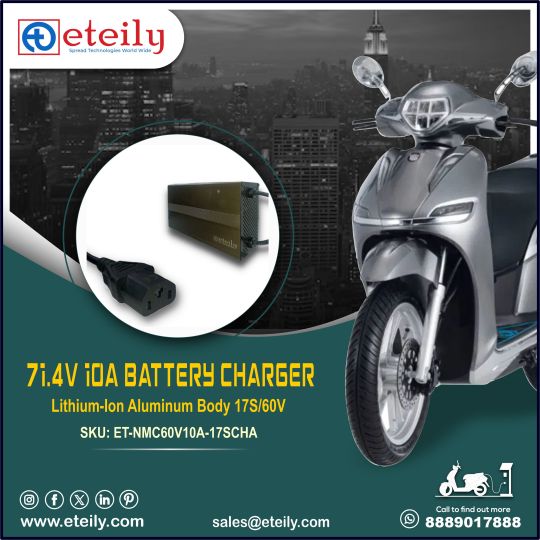
A charger for an electric bike is a device that is used to charge the battery of an electric bicycle (e-bike). E-bikes are bicycles that have an integrated electric motor and battery, which provides assistance to the rider when pedaling. Like electric Rickshaw, e-bikes also require charging, and this is where an e-bike charger comes in.
EV charger in india come in various types, charging speeds, and connector types. The most common types of e-bike chargers are the standard charger, the fast charger, and the portable charger. The standard charger is usually provided with the e-bike and can take several hours to charge the battery fully. Fast chargers can charge the battery faster, usually within a couple of hours. Portable chargers are small, lightweight, and can be carried in a bag or backpack, making them ideal for charging the battery on the go. We are also manufacturer and suppliers of ev charger in Delhi, Mumbai, Chennai, Hyderabad, Pune, Bangalore, Kolkata and Ahmedabad.
#electric vehicle charger#electric vehicle charger price#electric vehicle charger manufacturers#electric vehicle charger manufacturers in india#ev charger#ev charger in india#ev charger price in india#electric car chargers#electric bike charger#ev chargers manufacturers#Electric vehicle charger manufacturers in India#EV charging station manufacturers in India#EV Charger Manufacturers In India#EV Charging Solutions#EV Charging Stations Manufacturers in India#EV Fast Charger Manufacturers India#Dealer of ev charger in india#Supplier of Ev Charger#wholesaler of ev charger for bike#electric vehicle charger for 2 wheeler#electric vehicle charger for 3 wheeler#eteily ev charger#ev charger for e-bicycle#ev charger for e-scooter#ev charger for e- rickshaw#Scooter Battery charger#ebike battery charger#battery for electric scooter#Electric Bike Charger india#ev charger for bike
0 notes
Text
Padmini VNA Mechatronics Ltd
At Padmini VNA Mechatronics Ltd, we recycle 100% of waste generated, thus sending zero waste landfill. Through dedicated efforts over the years, we have successfully: Implemented a plastic ban policy, operating as a single-use plastic-free company since 2020. For more information visit our website: https://padminivna.com/
#auto parts manufacturers#automobile parts manufacturers#automotive sustainability#electric vehicle component manufacturers in india#two wheeler parts manufacturers#three wheeler components#automotive component manufacturers#automobile parts manufacturing#autos#cars
0 notes
Text

Electric Vehicle Charging Station
Ampvolts is the company that provides Electric Vehicle Charging Station In India. Buy your Ev charger for your EV from AmpVolts.
For more information visit us on: www.ampvolts.com
Or contact us on: 180003132244
#Electric Vehicle Charging Station In India#electric vehicle charging station#electric car charging station in gujarat#electric vehicle charging stations manufacturers in india#Electric Car Charging Stations#electric vehicle charging company#Electric Vehicle Charger#Ev charging Solution#EV Charging Station#EV Charging Points
1 note
·
View note
Text
Excerpt from the Substack Distilled:
In the last few months, the Biden administration has quietly passed multiple federal policies that will transform the United States economy and wipe out billions of tons of future greenhouse gas emissions.
The new policies have received little attention outside of wonky climate circles. And that is a problem.
Earlier this year, I wrote that Biden has done more to mitigate climate change than any President before him. For decades, environmentalists tried and failed to convince lawmakers to pass even the most marginal climate policies. It wasn’t until Biden took office that the logjam broke and the climate policies flowed. And yet few American voters are hearing this story in an election year of huge consequence.
It’s been two and a half months since I wrote that article. In that short time, the Biden administration has passed a handful of climate policies that will collectively cut more than 10 billion tons of planet-warming pollution over the next three decades, more than the annual emissions of India, Russia, Japan, South Korea, Canada, Saudi Arabia, and the entire continent of Europe—combined.
One climate policy that flew under the radar recently was the administration's latest energy efficiency rule, unveiled at the beginning of May. The new rules will reduce the amount of energy that water heaters use by encouraging manufacturers to sell models with more efficient heat pump technology. The new regulation is expected to save more energy than any federal regulation in history.
Most people give little thought to how the water in their homes is heated, but water heaters are the second-largest consumer of energy in the average American home and one of the largest sources of climate pollution in the country.
A few days before the administration announced its water heater efficiency rules, the Environmental Protection Agency (EPA) announced another sweeping policy.
According to the new rules, existing coal power plants will need to either shut down or install carbon capture technology capable of removing 90% of their carbon pollution. The policy will also require any new natural gas power plants that provide baseload power—the ones that run throughout the day and night, as opposed to the peaker plants that only run for a small fraction of hours in the year—to install carbon capture technology.
The new power sector rules are effectively a death blow to coal power in America, which has slowly faded over the last two decades but still emits more carbon emissions than almost every country in the world.
The water heater rules and power plant regulations will help the country meet its goal of cutting emissions by 50% by 2030. But impactful as they will be, they weren’t the most important climate policy that the Biden administration passed in the last two months.
That honor goes to the EPA’s tailpipe rules, which are set to transform the auto industry over the next decade.
Today the transportation sector is the largest source of climate pollution in the United States. Within the sector, passenger cars and trucks are the biggest contributors to emissions. While electric vehicle adoption has grown in recent years, America lags behind many other countries in decarbonizing its vehicle stock.
The EPA’s new rules will force automakers to reduce the amount of pollution and carbon emissions that come from their vehicles. The federal policy doesn’t specifically mandate that automakers produce EVs or stop selling gas-powered cars but instead regulates the average carbon emissions per mile of a manufacturer's entire fleet over the next decade. That means automakers can still sell gas-guzzling, carbon-spewing trucks in 2035. They’ll just need to sell a lot more EVs or plug-in hybrids to bring their average fleet emissions down if they do.
Like the power plant rules, the EPA’s new auto regulations are designed to avoid being thrown out by a conservative and hostile Supreme Court.
128 notes
·
View notes
Text
India’s electric rickshaws are leaving EVs in the dust
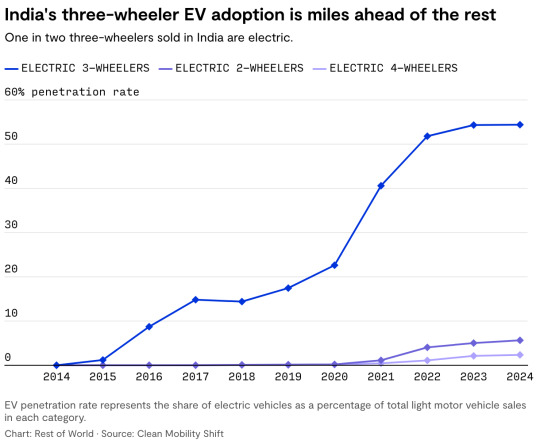
Each month, this upskilled team produces bodies and chassis for nearly 5,000 three-wheeler EVs, locally known as e-rickshaws, for the New Delhi-based YC Electric, India’s second-largest manufacturer in the segment. In 2023, YC Electric alone sold over 40,600 e-rickshaws, while 82,500 electric cars were sold in the country.
Even as India awaits its first Tesla, these humble e-rickshaws made by workers like Baran are powering an EV revolution in the country.
Each month, this upskilled team produces bodies and chassis for nearly 5,000 three-wheeler EVs, locally known as e-rickshaws, for the New Delhi-based YC Electric, India’s second-largest manufacturer in the segment. In 2023, YC Electric alone sold over 40,600 e-rickshaws, while 82,500 electric cars were sold in the country.
Even as India awaits its first Tesla, these humble e-rickshaws made by workers like Baran are powering an EV revolution in the country.

The Sonipat plant where YC builds its e-rickshaws is a joint venture with the company’s former Chinese import partners Jiang Li and Xue Jian Nan, who hold a 49% stake in the facility. “The link [with the Chinese suppliers] became so good that they also believed in us, invested money with us, and shared technology with us,” Kakkar said. Chinese engineers stayed “for days” to train welders like Baran when the factory first opened, he said.
His company’s ethos, according to Kakkar, is “Make in India, but technology from China.”
CHECK OUT THESE METALLIC CHROME BAD BOYS
youtube
(Via Rest of World)
48 notes
·
View notes
Text
Trump’s Project 2025 promises billions of tonnes more carbon pollution – study
Excerpt:
Should Trump retake the White House and pass the energy and environmental policies in the controversial Project 2025 document, the US’s planet-heating emissions will “significantly increase” by 2.7bn tonnes above the current trajectory by 2030, an amount comparable to the entire annual emissions of India, according to the report.
Such a burst of extra pollution would torpedo any chance the US could meet its goal of cutting emissions in half by 2030, which scientists say is imperative to help the world avert disastrous climate change. It would also, the analysis found, result in 1.7m lost jobs in 2030, due to reduced clean energy deployment that is not offset by smaller gains in fossil fuel jobs, and a $320bn hit to US GDP as a wave of new domestic renewables and electric car manufacturing is reversed.
Read more.
#donald trump#project 2025#climate change#climate emergency#2024 presidential election#kamala harris
15 notes
·
View notes
Text
What would you want to tell the next U.S. president? FP asked nine thinkers from around the world to write a letter with their advice for him or her.
Dear Madam or Mr. President,
Congratulations on your election as president of the United States. You take office at a moment of enormous consequence for a world directly impacted by the twin challenges of energy security and climate change.
Democrats and Republicans disagree on many aspects of energy and climate policy. Yet your administration has the chance to chart a policy path forward that unites both parties around core areas of agreement to advance the U.S. national interest.
First, all should agree that climate change is real and worsening. The escalating threat of climate change is increasingly evident to anyone walking the streets of Phoenix in the summer, buying flood insurance in southern Florida, farming rice in Vietnam, or laboring outdoors in Pakistan. This year will almost certainly surpass 2023 as the warmest year on record.
Second, just as the energy revolution that made the United States the world’s largest oil and gas producer strengthened it economically and geopolitically, so will ensuring U.S. leadership in clean energy technologies enhance the country’s geostrategic position. In a new era of great-power competition, China’s dominance in certain clean energy technologies—such as batteries and cobalt, lithium, graphite, and other critical minerals needed for clean energy products—threatens America’s economic competitiveness and the resilience of its energy supply chains. China’s overcapacity in manufacturing relative to current and future demand undermines investments in the United States and other countries and distorts demand signals that allow the most innovative and efficient firms to compete in the global market.
Third, using less oil in our domestic economy reduces our vulnerability to global oil supply disruptions, such as conflict in the Middle East or attacks on tankers in the Red Sea. Even with the surge in U.S. oil production, the price of oil is set in the global market, so drivers feel the pain of oil price shocks regardless of how much oil the United States imports. True energy security comes from using less, not just producing more.
Fourth, energy security risks extend beyond geopolitics and require investing adequately in domestic energy supply to meet changing circumstances. Today, grid operators and regulators are increasingly warning that the antiquated U.S. electricity system, already adjusting to handle rising levels of intermittent solar and wind energy, is not prepared for growing electricity demand from electric cars, data centers, and artificial intelligence. These reliability concerns were evident when an auction this summer set a price nine times higher than last year’s to be paid by the nation’s largest grid operator to power generators that ensure power will be available when needed. A reliable and affordable power system requires investments in grids as well as diverse energy resources, from cheap but intermittent renewables to storage to on-demand power plants.
Fifth, expanding clean energy sectors in the rest of the world is in the national interest because doing so creates economic opportunities for U.S. firms, diversifies global energy supply chains away from China, and enhances U.S. soft power in rapidly growing economies. (In much the same way, the Marshall Plan not only rebuilt a war-ravaged Europe but also advanced U.S. economic interests, countered Soviet influence, and helped U.S. businesses.) Doing so is especially important in rising so-called middle powers, such as Brazil, India, or Saudi Arabia, that are intent on keeping their diplomatic options open and aligning with the United States or China as it suits them transactionally.
To prevent China from becoming a superpower in rapidly growing clean energy sectors, and thereby curbing the benefits the United States derives from being such a large oil and gas producer, your administration should increase investments in research and development for breakthrough clean energy technologies and boost domestic manufacturing of clean energy. Toward these ends, your administration should quickly finalize outstanding regulatory guidance to allow companies to access federal incentives. Your administration should also work with the other side of the aisle to provide the market with certainty that long-term tax incentives for clean energy deployment—which have bipartisan support and have already encouraged historic levels of private investment—will remain in place. Finally, your administration should work with Congress to counteract the unfair competitive advantage that nations such as China receive by manufacturing industrial products with higher greenhouse gas emissions. Such a carbon import tariff, as proposed with bipartisan support, should be paired with a domestic carbon fee to harmonize the policy with that of other nations—particularly the European Union’s planned carbon border adjustment mechanism.
Your ability to build a strong domestic industrial base in clean energy will be aided by sparking more domestic clean energy use. This is already growing quickly as market forces respond to rapidly falling costs. Increasing America’s ability to produce energy is also necessary to maintain electricity grid reliability and meet the growing needs of data centers and AI. To do so, your administration should prioritize making it easier to build energy infrastructure at scale, which today is the greatest barrier to boosting U.S. domestic energy production. On average, it takes more than a decade to build a new high-voltage transmission line in the United States, and the current backlog of renewable energy projects waiting to be connected to the power grid is twice as large as the electricity system itself. It takes almost two decades to bring a new mine online for the metals and minerals needed for clean energy products, such as lithium and copper.
The permitting reform bill recently negotiated by Sens. Joe Manchin and John Barrasso is a good place to start, but much more needs to be done to reform the nation’s permitting system—while respecting the need for sound environmental reviews and the rights of tribal communities. In addition, reforming the way utilities operate in the United States can increase the incentives that power companies have not just to build new infrastructure but to use existing infrastructure more efficiently. Such measures include deploying batteries to store renewable energy and rewiring old transmission lines with advanced conductors that can double the amount of power they move.
Grid reliability will also require more electricity from sources that are available at all times, known as firm power. Your administration should prioritize making it easier to construct power plants with advanced nuclear technology—which reduce costs, waste, and safety concerns—and to produce nuclear power plant fuel in the United States. Doing so also benefits U.S. national security, as Russia is building more than one-third of new nuclear reactors around the world to bolster its geostrategic influence. While Russia has been the leading exporter of reactors, China has by far the most reactors under construction at home and is thus poised to play an even bigger role in the international market going forward. The United States also currently imports roughly one-fifth of its enriched uranium from Russia. To counter this by building a stronger domestic nuclear industry, your administration should improve the licensing and approval process of the Nuclear Regulatory Commission and reform the country’s nuclear waste management policies. In addition to nuclear power, your administration should also make it easier to permit geothermal power plants, which today can play a much larger role in meeting the nation’s energy needs thanks to recent innovations using technology advanced by the oil and gas sector for shale development.
Even with progress on all these challenges, it is unrealistic to expect that the United States can produce all the clean energy products it needs domestically. It will take many years to diminish China’s lead in critical mineral supply, battery manufacturing, and solar manufacturing. The rate of growth needed in clean energy is too overwhelming, and China’s head start is too great to diversify supply chains away from it if the United States relies solely on domestic manufacturing or that of a few friendly countries. As a result, diminishing China’s dominant position requires that your administration expand economic cooperation and trade partnerships with a vast number of other nations. Contrary to today’s protectionist trends, the best antidote to concerns about China’s clean technology dominance is more trade, not less.
Your administration should also strengthen existing tools that increase the supply of clean energy products in emerging and developing economies in order to diversify supply chains and counter China’s influence in these markets. For example, the U.S. International Development Finance Corp. (DFC) can be a powerful tool to support U.S. investment overseas, such as in African or Latin American projects to mine, refine, and process critical minerals. As DFC comes up for reauthorization next year, you should work with Congress to provide DFC with more resources and also change the way federal budgeting rules account for equity investments; this would allow DFC to make far more equity investments even with its existing funding. Your administration can also use DFC to encourage private investment in energy projects in emerging and developing economies by reducing the risk investors face from fluctuations in local currency that can significantly limit their returns or discourage their investment from the start. The U.S. Export-Import Bank is another tool to support the export of U.S. clean tech by providing financing for U.S. goods and services competing with foreign firms abroad.
Despite this country’s deep divisions and polarization, leaders of both parties should agree that bolstering clean energy production in the United States and in a broad range of partner countries around the world is in America’s economic and security interests.
I wish you much success in this work, which will also be the country’s success.
11 notes
·
View notes
Text
SEMICONDUCTORS
(How India is progressing in this sector)
1.What is a Semiconductor?
Semiconductors are materials which has electrical conductivity ranging between conductors and insulators. Conductors are good conductors of electricity while Insulators are bad conductors of electricity.

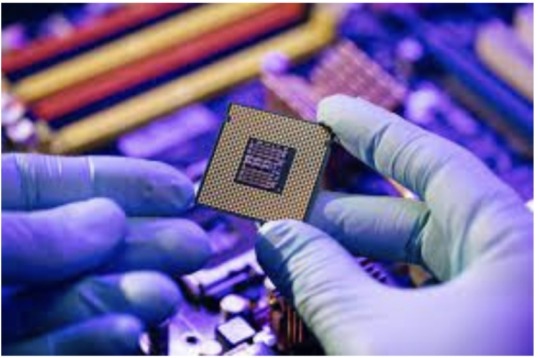
2.Where is a semiconductor used?
Semiconductors are used in manufacture of various electronic devices like diodes, transistors and integrated circuits. The most popular use of a semiconductor is in cars. In vehicles these semiconductor chips are used to control emission systems, driver assist systems etc. Not only in electric cars these chips are also used in petrol cars.

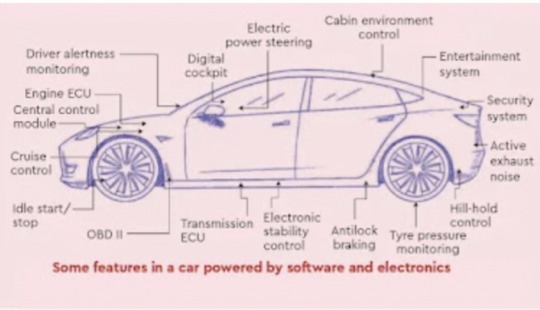
3.A Semiconductor is made up of which material?
Generally a Semiconductor chip is made up of silicon, germanium and gallium arsenide. Out of these three germanium is the oldest.
4.How will a semiconductor help?
First of all semiconductors regulate the flow of electricity and assist in making electronics function. Secondly the electrical conductivity of a semiconductor can be controlled over a wide range making them versatile for various applications. As I told you earlier that a semiconductor is not only used in electric cars but also in petrol cars, this is because semiconductors increase fuel efficiency in cars. By using semiconductors in engine control systems car manufacturers can achieve more precise control of the engine resulting in improved fuel economy and lower emissions.
So these were some common questions people ask when they hear about a semiconductor.
Now you must know that how it will help India and what steps India is taking to manufacture semiconductors in India.
At present Taiwan, USA, Japan, South Korea, China, Israel, Netherlands, UK and Germany can manufacture semiconductors. Out of these countries China and Taiwan produce a large amount of semiconductor.
More exciting thing was that USA and China were in contention with each other in this matter. During era of Donald Trump there aroused a semiconductor war between USA and China. USA wanted to disrupt China's semiconductor manufacturing and hence put a lot of sanctions on China. USA also funded Taiwan and wanted Taiwan to produce more semiconductors than China.

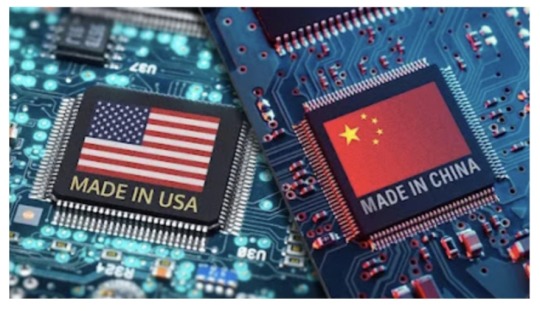
In all this India was benefited a lot. India also wanted to develop semiconductor plants in country and facilitate ATMANIRBHAR BHARAT initiative.
https://ism.gov.in/ this is the link of Government's India Semiconductor Mission. This mission aims at forming a semiconductor ecosystem in India.


Government of India is also working on many other semiconductor initiatives like SPECS initiative. Moreover a joint venture of Vedanta electronics manufacturing giant Foxconn has finalised Dholera Special Investment Region near Ahmedabad for setting up their semiconductor display manufacturing facility.

So much progress is happening in India and surely it will facilitate India's economy and will also provide more job opportunities. India will surely emerge as a Developed nation in upcoming years and these semiconductor initiatives are like a cherry on the cake.
Watch this video for more info.
I hope you liked my article
Pls put forward your views in comment section
Till then PEACE OUT........
My insta : sm_it_22
~Written By Smit.
3 notes
·
View notes
Photo

Scott Horton · Drew Sheneman, Newark Star-Ledger
* * * *
LETTERS FROM AN AMERICAN
February 15, 2023
Heather Cox Richardson
President Joe Biden hit the road today to continue the push to highlight the successes of his administration's investment in the economy. In Lanham, Maryland, at the International Brotherhood of Electrical Workers (IBEW) Local 26, he celebrated the economic plan that “grows the economy from the bottom up and the middle out, not the top down.”
He praised union labor and said that the nation’s investment in green energy would mean “good-paying jobs for electricians, plumbers, pipefitters, laborers, carpenters, cement masons, ironworkers, and so much more. And these are good jobs you can raise a family on.” “It’s a stark contrast to our Republican friends, who are doubling down on the same failed politics of the past. Top-down, trickle-down economics is not much trickle down…to most kitchen tables in America,” he said.
He reiterated that he would lay out his budget on March 9 and that he expected the Republicans to lay out theirs, so people can compare the two. Biden maintains that his policy of investing in infrastructure and putting money in the hands of ordinary Americans will nurture the economy and reduce the deficit as growth brings in more tax dollars. Meanwhile, he said, the Republican tax cut of 2017 has already added $2 trillion to the federal deficit.
Good economic news is putting wind under Biden’s wings. The economy continues to perform better than expected in 2023. Retail buying increased 3% in January, and the job market remains strong. The administration today highlighted another series of large private sector investments in American manufacturing: Boeing announced that Air India has contracted to buy more than 200 aircraft; Ford announced it will build a $3.5 billion factory in Marshall, Michigan, to make advanced batteries for electric vehicles; and Texas Instruments announced it will build an $11 billion semiconductor plant in Lehi, Utah.
Biden emphasized that these investments would provide “good-paying jobs that [Americans] can raise a family on, the revitalization of entire communities that have often been left behind, and America leading the world again in the industries that drive the future.”
Biden accused the Republicans of proposing measures that would raise the deficit, which is already rising again. The Congressional Budget Office today projected a much higher deficit for 2023 than it did in May 2022 because of new laws, mandatory spending for Social Security and Medicare, and higher interest rates in place to combat inflation. The CBO notes that “spending substantially exceeds revenues in our projections even though pandemic-related spending lessens. In addition, rising interest rates drive up the cost of borrowing. The resulting deficits steadily increase the government’s debt. Over the long term, our projections suggest that changes in fiscal policy must be made to address the rising costs of interest and mitigate other adverse consequences of high and rising debt.”
This is precisely what Republicans have been complaining about with regard to the Democrats’ recent laws to rebuild infrastructure and invest in the economy, while ignoring that their own tax cuts have also added mightily to the deficit. Republicans want to address the rising deficit with spending cuts; Biden, with taxes on wealthy Americans and corporations.
Biden appears to be trying to turn the nation to a modern version of the era before Reagan, when the government provided a basic social safety net, protected civil rights, promoted infrastructure, and regulated business. Since the 1980s, the Republicans have advocated deregulation with the argument that government interference in the way a company does business interrupts the market economy.
But the derailment of fifty Norfolk Southern train cars, eleven of which carried hazardous chemicals, near East Palestine, Ohio, near the northeastern border of the state on February 3 has powerfully illustrated the downsides of deregulation. The accident released highly toxic chemicals into the air, water, and ground, causing a massive fire and forcing about 5,000 nearby residents in Ohio and Pennsylvania to evacuate. On February 6, when it appeared some of the rail cars would explode, officials allowed the company to release and burn the toxic vinyl chloride stored in it. The controlled burn sent highly toxic phosgene, used as a weapon in World War I, into the air.
Republican Ohio governor Mike DeWine has refused federal assistance from President Biden, who, he said, called to offer “anything you need.” DeWine said he had not called back to take him up on the offer. “We will not hesitate to do that if we’re seeing a problem or anything, but I’m not seeing it,” he said.
Just over the border, Pennsylvania governor Josh Shapiro, a Democrat, said that Norfolk Southern had botched its response to the accident. “Norfolk Southern has repeatedly assured us of the safety of their rail cars—in fact, leading Norfolk Southern personnel described them to me as ‘the Cadillac of rail cars’—yet despite these assertions, these were the same cars that Norfolk Southern personnel rushed to vent and burn without gathering input from state and local leaders. Norfolk Southern’s well known opposition to modern regulations [requires] further scrutiny and investigation to limit the devastating effects of future accidents on people’s lives, property, businesses, and the environment.”
Shapiro was likely referring to the fact that in 2017, after donors from the railroad industry poured more than $6 million into Republican political campaigns, the Trump administration got rid of a rule imposed by the Obama administration that required better braking systems on rail cars that carried hazardous flammable materials.
According to David Sirota, Julia Rock, Rebecca Burns, and Matthew Cunningham-Cook, writing in the investigative journal The Lever, Norfolk Southern supported the repeal, telling regulators new electronically controlled pneumatic brakes on high-hazard flammable trains (HHFT) would “impose tremendous costs without providing offsetting safety benefits.” Railroads also lobbied to limit the definition of HFFT to cover primarily trains that carry oil, not industrial chemicals. The train that derailed in Ohio was not classified as an HHFT.
Nonetheless, Ohio’s new far-right Republican senator J. D. Vance went on the Fox News Channel show of personality Tucker Carlson to blame the Biden administration for the accident. He said there was no excuse for failing infrastructure after the passage last year of the Bipartisan Infrastructure Bill, and said that the administration is too focused on “environmental racism and other ridiculous things.” We are, he said, “ruled by unserious people.”
He also issued a statement saying that “my office will continue to work with FEMA” over the issue, although FEMA, the Federal Emergency Management Agency, has not been mobilized because Ohio governor DeWine has not requested a federal disaster declaration.
LETTERS FROM AN AMERICAN
HEATHER COX RICHARDSON
#Letters From an American#heather cox richardson#infrastructure#Corrupt GOP#Criminal GOP#MAGA Republicans#Drew Sheneman#political parties#train wreck#government regulations
9 notes
·
View notes
Text
Aluminum Market: Products, Applications & Beyond
Aluminum is a versatile element with several beneficial properties, such as a high strength-to-weight ratio, corrosion resistance, recyclability, electrical & thermal conductivity, longer lifecycle, and non-toxic nature. As a result, it witnesses high demand from industries like automotive & transportation, electronics, building & construction, foil & packaging, and others. The high applicability of the metal is expected to drive the global aluminum market at a CAGR of 5.24% in the forecast period from 2023 to 2030.

Aluminum – Mining Into Key Products:
Triton Market Research’s report covers bauxite, alumina, primary aluminum, and other products as part of its segment analysis.
Bauxite is anticipated to grow with a CAGR of 5.67% in the product segment over the forecast years.
Bauxite is the primary ore of aluminum. It is a sedimentary rock composed of aluminum-bearing minerals, and is usually mined by surface mining techniques. It is found in several locations across the world, including India, Brazil, Australia, Russia, and China, among others. Australia is the world’s largest bauxite-producing nation, with a production value of over 100 million metric tons in 2022.
Moreover, leading market players Rio Tinto and Alcoa Corporation operate their bauxite mines in the country. These factors are expected to propel Australia’s growth in the Asia-Pacific aluminum market, with an anticipated CAGR of 4.38% over the projected period.
Alumina is expected to grow with a CAGR of 5.42% in the product segment during 2023-2030.
Alumina or aluminum oxide is obtained by chemically processing the bauxite ore using the Bayer process. It possesses excellent dielectric properties, high stiffness & strength, thermal conductivity, wear resistance, and other such favorable characteristics, making it a preferable material for a range of applications.
Hydrolysis of aluminum oxide results in the production of high-purity alumina, a uniform fine powder characterized by a minimum purity level of 99.99%. Its chemical stability, low-temperature sensitivity, and high electrical insulation make HPA an ideal choice for manufacturing LED lights and electric vehicles. The growth of these industries is expected to contribute to the progress of the global HPA market.
EVs Spike Sustainability Trend
As per the estimates from the International Energy Agency, nearly 2 million electric vehicles were sold globally in the first quarter of 2022, with a whopping 75% increase from the preceding year. Aluminum has emerged as the preferred choice for auto manufacturers in this new era of electromobility. Automotive & transportation leads the industry vertical segment in the studied market, garnering $40792.89 million in 2022.
In May 2021, RusAl collaborated with leading rolled aluminum products manufacturer Gränges AB to develop alloys for automotive applications. Automakers are increasingly substituting stainless steel with aluminum in their products owing to the latter’s low weight, higher impact absorption capacity, and better driving range.
Also, electric vehicles have a considerably lower carbon footprint compared to their traditional counterparts. With the growing need for lowering emissions and raising awareness of energy conservation, governments worldwide are encouraging the use of EVs, which is expected to propel the demand for aluminum over the forecast period.
The Netherlands is one of the leading countries in Europe in terms of EV adoption. The Dutch government has set an ambitious goal that only zero-emission passenger cars (such as battery-operated EVs, hydrogen FCEVs, and plug-in hybrid EVs) will be sold in the nation by 2030. Further, according to the Canadian government, the country’s aluminum producers have some of the lowest CO2 footprints in the world.
Alcoa Corporation and Rio Tinto partnered to form ELYSIS, headquartered in Montréal, Canada. In 2021, it successfully produced carbon-free aluminum at its Industrial Research and Development Center in Saguenay. The company is heralding the beginning of a new era for the global aluminum market with its ELYSIS™ technology, which eliminates all direct GHG emissions from the smelting process, and is the first technology ever to emit oxygen as a byproduct.
Wrapping Up
Aluminum is among the most widely used metals in the world today, and is anticipated to underpin the global transition to a low-carbon economy. Moreover, it is 100% recyclable and can retain its properties & quality post the recycling process.
Reprocessing the metal is a more energy-efficient option compared to extracting the element from an ore, causing less environmental damage. As a result, the demand for aluminum in the sustainable energy sector has thus increased. The efforts to combat climate change are thus expected to bolster the aluminum market’s growth over the forecast period.
#Aluminum Market#aluminum#chemicals and materials#specialty chemicals#market research#market research reports#triton market research
4 notes
·
View notes
Text
Electric Vehicle Battery Charger
Eteily Technologies India Pvt Ltd is a high tech oriented Electric Vehicle Chargers Manufacturer, we are specialized in Lithium Ion, LifePo4 and Lead Acid Battery EV Charger. Our charger are high quality stable, smart and portable and efficient up to 93%. These charger include electric bike charger india, e-motorcycle, e-bicycle charger and for other application.
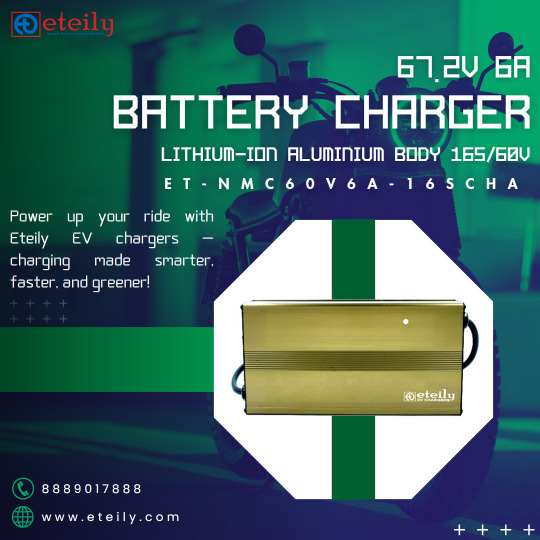
#electric vehicle chargers#electric vehicle charger#electric vehicle charger price#electric vehicle charger manufacturers#electric vehicle charger manufacturers in india#ev charger#ev charger in india#ev charger price in india#electric car chargers#electric bike charger#ev chargers manufacturers#Electric vehicle charger manufacturers in India#EV charging station manufacturers in India#EV Charger Manufacturers In India#EV Charging Solutions#EV Charging Stations Manufacturers in India#EV Fast Charger Manufacturers India#Dealer of ev charger in india#Supplier of Ev Charger#wholesaler of ev charger for bike#electric vehicle charger for 2 wheeler#electric vehicle charger for 3 wheeler
0 notes
Text
Celebrating India’s EV Journey
Today is World EV Day. The day is observed every year with special awareness campaigns being organized globally to educate people about the benefits of electric vehicles.

While China is the world’s largest EV market, India is the second largest and most promising. Driven by incentives by the Centre and the states, the adoption of EVs is gaining momentum. India’s EV sector is attracting increasing investments in battery technology, charging infrastructure and product options. Some of the biggest brands in the EV space include Tata Nexon in cars, the Mahindra Treo in three-wheelers and Hero Electric and Ola in scooters. In addition, there are a whole lot of startups that are working on various aspects of the EV eco-system.
In this article, Autocar Professional takes you through India’s EV landscape with leaders in the segment commenting on sustainable mobility and a zero-emission future.
Meanwhile, a recent study by Castrol study has highlighted key insights on EV readiness for markets, carmakers, and consumers. Its global survey ‘Switching ON the rEVolution’ covering 10,000 consumers and 100 leaders from car manufacturers in 10 key global markets, including India suggests that 44 percent of consumers surveyed in India are considering an EV for their next vehicle purchase while 55 percent are still considering an ICE vehicle.
Shailesh Chandra, MD, Tata Motors Passenger Vehicles and Tata Passenger Electric Mobility

World EV Day is indeed a special day for us, as we look back and reflect on our journey so far. We are proud to lead the EV market in India, with a lion’s share of 88 percent. As early entrants, we have shaped the market and seen it grow with Nexon EV and Tigor EV. We have over 40,000 Tata EVs plying on road. We have also established Tata UniEVerse, a one of its kind EV ecosystem, which is further propelling the EV adoption.
Santosh Iyer, VP-Sales & Marketing, Mercedes-Benz India

Mercedes-Benz Indian has a very aggressive EV roadmap for the Indian market with three new luxury EVs. We pioneered luxury EVs in India with the EQC in 2020, which received good response from the early adopters in the luxury segment. EQC’s acceptability and market success set the ground for other brands to foray into the luxury EV segment.
Suman Mishra, Mahindra Electric Mobility

We celebrate India’s electrification journey. At Mahindra Last Mile Mobility, we are committed to promoting sustainable motoring with zero emission products. I am confident that with our collective efforts, we can enable a green and smarter tomorrow for India.
Warren Harris, CEO, Tata Technologies

Tata Technologies’ vision of Engineering a better world embodies our commitment to providing sustainable solutions especially in the rapidly growing Electric Vehicle Market. The transition to EV is also an opportunity and would also be synonymous with a move to connected vehicles enabled by ADAS and digital customer experience solutions. Tata Technologies offers end-to-end solutions for engineering, manufacturing support, and customer experience solutions for EVs globally. We have developed an elaborate EV ecosystem through alliances and partnerships across the world, including an alliance with MIH Consortium which enables us to leverage the EV ecosystem to deliver best value for our Customers.
Nagesh Basavanhalli, Executive Vice Chairman, Greaves Cotton

Greaves Electric Mobility owned Ampere is one of the fastest growing electric two-wheeler brands in the Country while the company also operates/owns the rapidly growing e-rickshaw brand Ele (Bestway) and the Teja (MLR Auto) range of L5 category three wheelers. Together the portfolio offers a strong value proposition to electrifying the way people and goods move across our country.
Mahesh Babu, CEO, Switch Mobility India, COO, Switch Mobility

To meet India’s global commitment to become Net Zero by 2070, we need to prioritize not just public transport, but public transport with zero tailpipe emissions. Electric buses are clearly the best and obvious solution to accelerate decarbonisation with increasing mass mobility. It is this imperative that guides us at Switch Mobility — to help India attain its ambitious Net Zero target by offering the society with smart, clean mass mobility solutions that are also technologically advanced, safe and comfortable for passengers. Our vision is to transform mass mobility across cities and highways, and bring about a clean revolution in the way people travel. I take the opportunity on World EV Day 2022 to invite partners and people who share the same vision to jointly achieve this critical transition.
Balbir Singh Dhillon, Head of Audi
We have installed 100+ chargers pan-India and 16 high-speed 50kW chargers across our dealerships located across strategic highways within the country. In line with our global plans to be all-electric by 2033, we are aiming to achieve about 15 percent of our India sales from EVs by 2025–2026. It’s time we start to care for the climate. I think the sooner we realise we are responsible for it, the better it is for all.
Read More: https://www.tatatechnologies.com/en/media-center/celebrating-indias-ev-journey/
2 notes
·
View notes
Text
Electric Vehicle Charging Station In India
AmpVolts is a company with progressive thinking. We sense market requirements and bring optimum technology solutions to society.
Electric vehicle charging stations are the need of the hour and AmpVolts makes sure you can buy your next Electric Vehicle without any “Range Anxiety”.
#Electric Vehicle Charging Station In India#electric vehicle charging station#electric car charging station in gujarat#electric vehicle charging stations manufacturers in india#Electric Car Charging Stations
1 note
·
View note
Text
Learn Electric Vehicle Repairing at JobsAcademy in Alappuzha

With the fast pace of change in the automotive industry, the electric vehicle (EV) industry needs a new generation of skilled technicians. If you want to work in a field that is growing quickly and has lots of job openings, the electric vehicle business is a great choice. The EV Technician Course at Jobs Academy, Alappuzha, is a great way to get started in this cutting-edge field and be a part of the green mobility movement.
About the EV Technician Course
The EV Technician Course at Jobs Academy is a complete program that will teach you everything you need to know about designing, building, and maintaining electric vehicles. With demand for EV-related skills rising steadily by 40% worldwide, this course is designed to get you ready for one of the car industry’s fastest-growing areas. No matter if you’re interested in electrical systems, mechanics, or engineering, our program will help you understand how electric cars work and how to fix and maintain them.
Here’s what our program offers:
Course Duration: 4 months of intensive training
Internship/On-the-Job Training: 3 months of real-world experience
Placement Assistance: 100% job placement support
Eligibility: 10+2 (or equivalent)
Certification: NSDC Certified Program
Our training method includes live projects that you can work on with other people, recorded lessons that you can use to review, and a hands-on approach to fixing and diagnosing vehicles. Experts in the field will teach the course, so you’ll learn the most useful skills right away, putting you on the fast track to success in the world of electric vehicles.
Why Electric Vehicles are the Future
There are various reasons why there is a growing demand for electric vehicles:
Environmental Concerns: EVs provide a sustainable alternative as awareness of climate change and the effects of fossil fuel-powered vehicles on the environment grows.
Government Support: Through tax breaks, subsidies, and the construction of charging infrastructure, several governments, including India’s, are promoting the manufacture and use of EVs. The Indian government has likewise established aggressive timelines for the phase-out of gasoline-powered automobiles.
Technological Developments: Due to battery and charging system technology improvements, electric vehicles are becoming more affordable and dependable.
Cost-effectiveness: Compared to conventional cars, EVs require less maintenance because they have fewer moving components. As a result, there is an increasing need for qualified technicians who can maintain and repair this complex machinery.
Why Make A Career As An EV Technician?
A Growing Industry: The electric vehicle (EV) market is booming and presents excellent job prospects as the auto industry embraces sustainability and reduces carbon emissions.
High Demand for Skilled Technicians: Industry projections predict a 44% CAGR for the Indian electric car market between 2020 and 2027. Electric car repair and maintenance experts are in high demand.
High Salary Package: According to LinkedIn, there is a 40% rise in demand for EV-related talents, indicating competitive pay and prospects for professional progression.
Positive Environmental Impact: Possessing EV-related abilities allows you to support the growth of clean transportation and make a positive impact on the environment.
Diverse Career Options: With EV’s industry-valued skill sets, you can investigate a range of career options in EV-related domains such as engineering, development, manufacturing, and more.
Why Choose Jobs Academy for EV Technician Training?
Jobs Academy strives to give students the greatest education and job-ready skills. What makes our EV Technician training the best for aspiring professionals:
Industry-specific In-demand Courses
The latest EV market trends and demands inform our courses. JobsAcademy’s EV Technician course provides real-time insights and feedback from industry professionals to teach you the latest skills. EV specialists will receive training to succeed in the employment market.
Placement Support and Internship Opportunities
Learn beyond the classroom at Jobs Academy. In order to give you practical experience in the area, our course includes a three-month internship or on-the-job training. Applying what you’ve learnt in the classroom to practical situations, you’ll work with electric automobiles. After completing the course, you will be well-equipped to find employment thanks to this experience and our 100% placement help.
Lifetime Access to Learning Management System (LMS)
After the lesson is over, learning doesn’t stop. We offer students of Jobs Academy lifetime access to our Learning Management System (LMS), which has self-study tools, recorded sessions, and a student helpdesk. These ongoing support options let you go over course material again, keep up with changes in the business, and keep improving your skills even after the program is over.
Comprehensive Study Materials and Live Sessions
At Jobs Academy, we provide comprehensive materials that you can use to study on your own time, as well as live, interactive classes taught by professionals in the field. You will be able to learn from skilled EV technicians, ask them questions in real-time, and get training that you can use right away. This method of learning makes sure that you not only understand the theory but also know how to use it correctly in real life.
Career Possibilities Following the Course
Graduates of JobsAcademy’s Electric Vehicle Repairing course will be equipped with the skills necessary to pursue a lucrative career in the EV sector. Among the possible job pathways are:
EV Technician: A person who diagnoses, fixes, and maintains electric vehicles in car dealerships, service facilities, or independent repair shops.
Battery Technician: Expert in repairing and maintaining electric vehicle batteries.
Electric Motor Technician: Specializing in electric motor upkeep and repair. Repairing and maintaining power electronic components is the responsibility of a power electronics technician.
EV Consultant: Offering technical guidance and assistance to people and companies thinking about adopting or buying electric vehicles.
Take the Next Step Towards a Rewarding Career in the EV Sector
As the electric vehicle business grows, so do the job possibilities for skilled people. JobsAcademy’s EV Technician Course will give you the technical skills, knowledge of the industry, and real-world experience you need to do well in this quickly changing field. The future of electric cars is exciting and full of opportunities, whether you want to change careers or get better at the one you already have.
Bring your EV to Jobs Academy in Alappuzha and be a part of the change. Make sure you have a future in this industry that is expanding quickly by getting professional training and real-world experience.
Sign up now and speed up your way to success in the world of electric cars!
Resources — https://bit.ly/3TzHwYF
#EV technician course in Alappuzha#EV technician course#Career in EV technician course#EV technician course in Thiruvananthapuram
0 notes